Moroccans cherish their food, and I mirror their sentiment; it isn’t just about the food itself it’s about the cultures and traditions that accompany the food. It’s about the love and energy that goes into the food.
Here are some highlights:
Tagine is slow cooking in a clay dish over coals, with amazing spices.
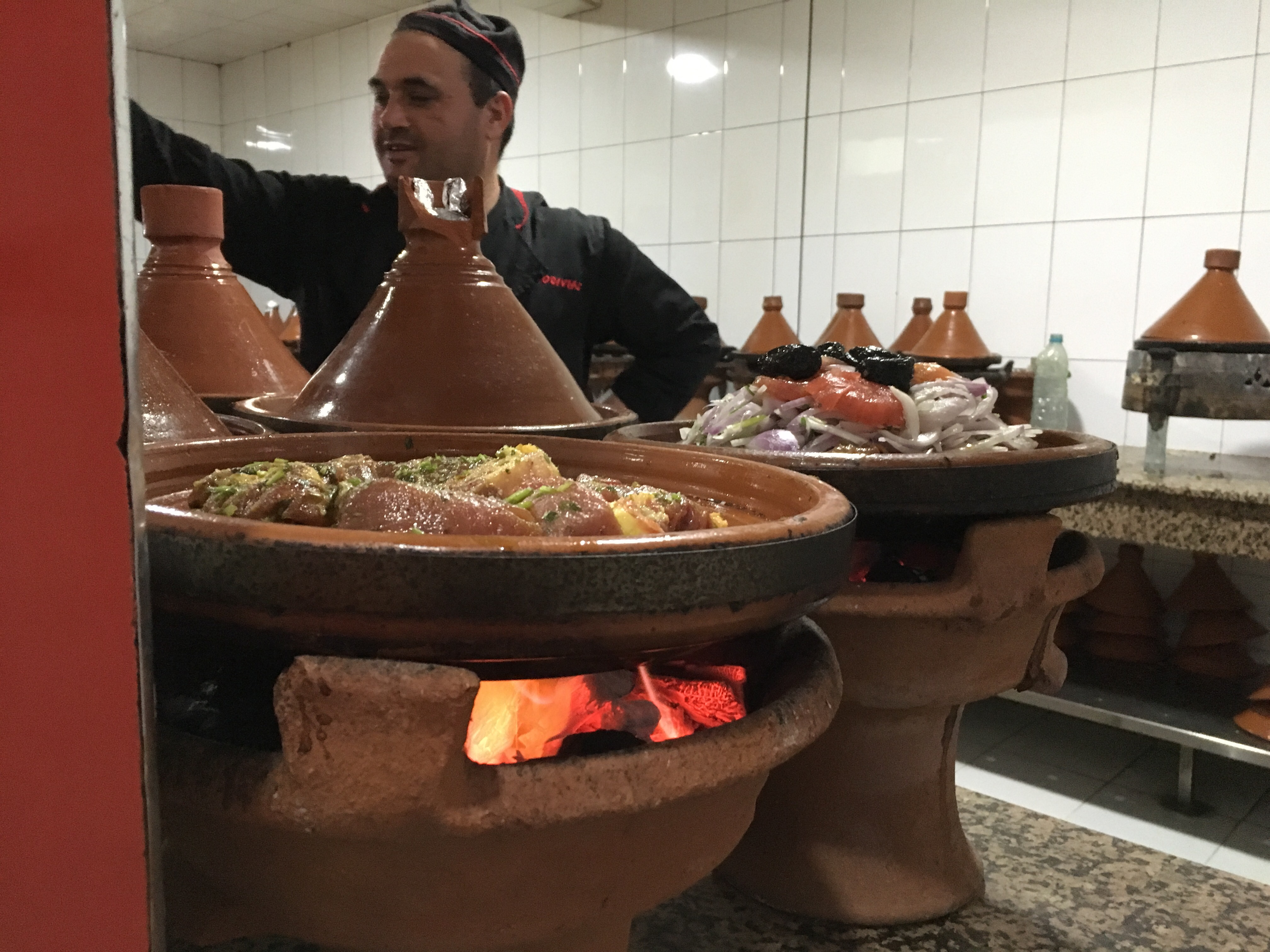
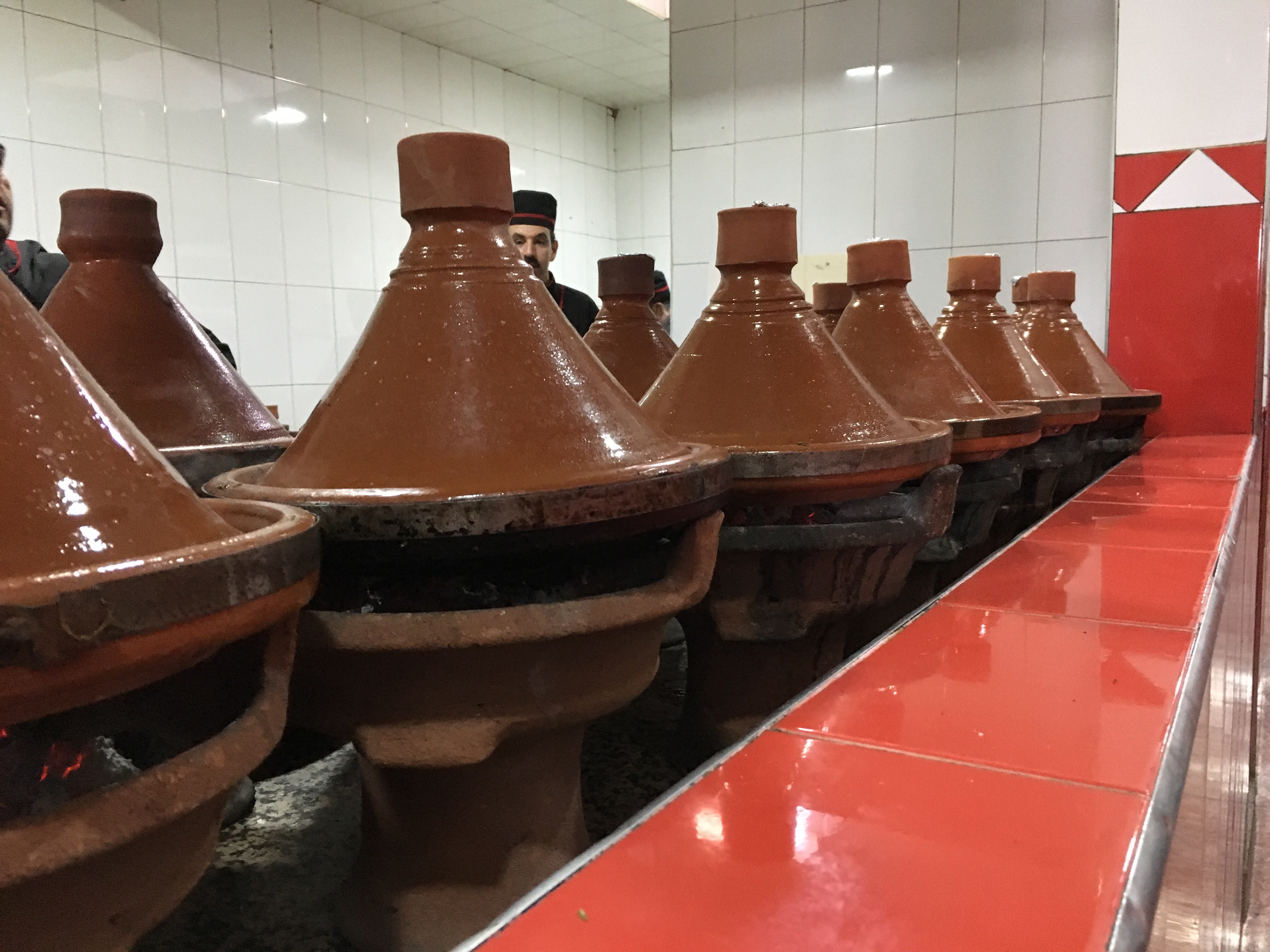
Moroccans love sweets and cakes (cookies). A fabulously talented student drew this chocolate bar! (Drawn by Abd elhakim Arkha)

This is our homemade tagine of lamb, potatoes, carrots, and onions. It was so tasty, even though we ate this dinner at midnight!
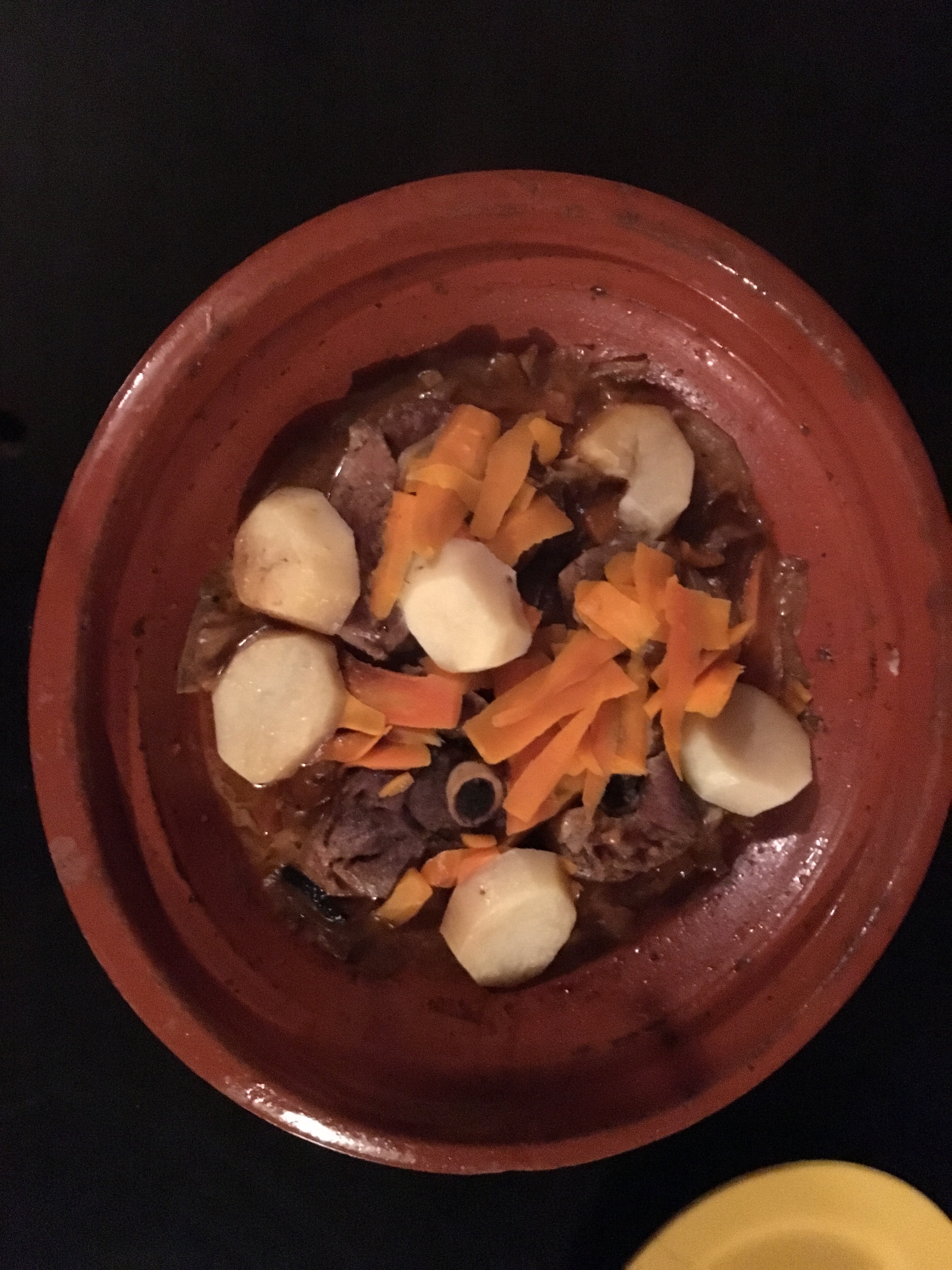
Buttermilk (eaten with a spoon) is a Friday treat. I’m told if milk sits out for two days it becomes ready to have, and if it’s done in the fridge it takes four days. It’s somewhat similar tasting to what we have for yogurt in America but is much thinner.
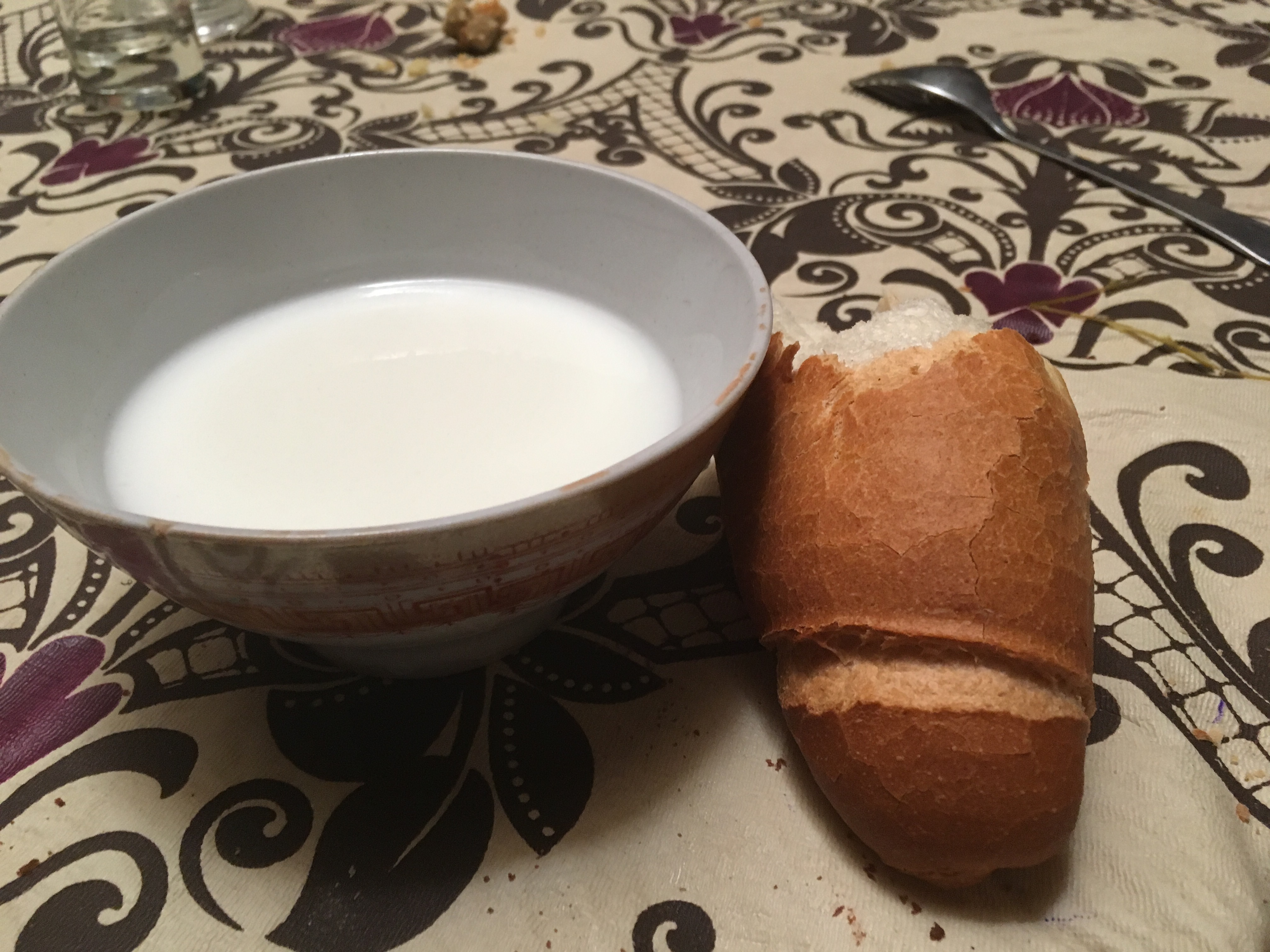
Enjoying a Friday meal of couscous and tagine with our host teacher’s family. Meals are meant to be eaten together over conversation, and this was the best!
I wish in America that we linked food more to our experiences with each other. I have learned that food needs to be enjoyed, without being rush and distracted.
More food highlights:
I got to pour tea!
They made us a cake for a farewell party (before we headed back to Rabat today)
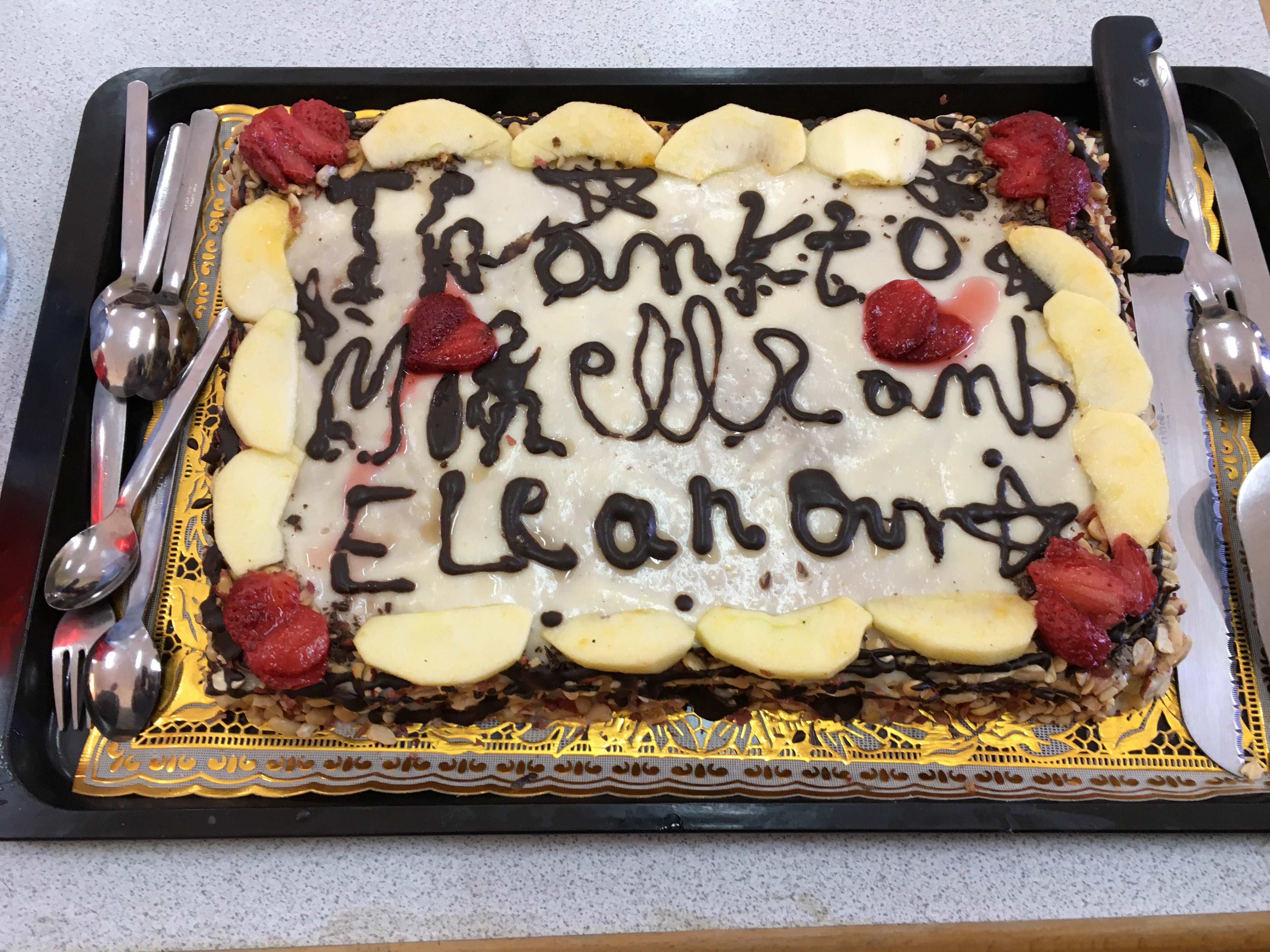
This salad (at a restaurant) was a divine lunch made with tuna (it tastes amazing here) and has cooked potatoes on it. Lots of fresh vegetables are available here in Morocco.
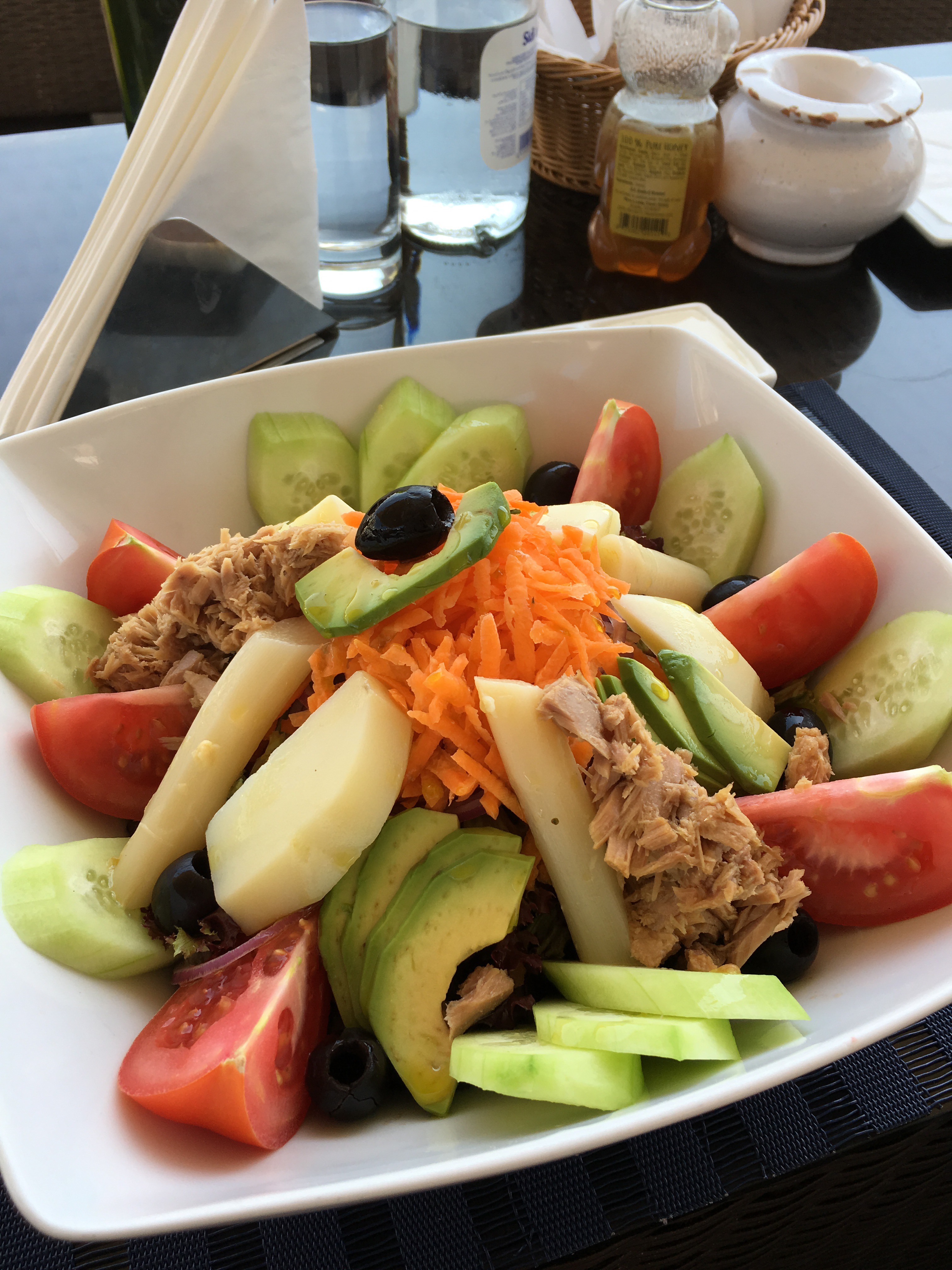
Peanut butter is made in this device here and tastes really yummy.
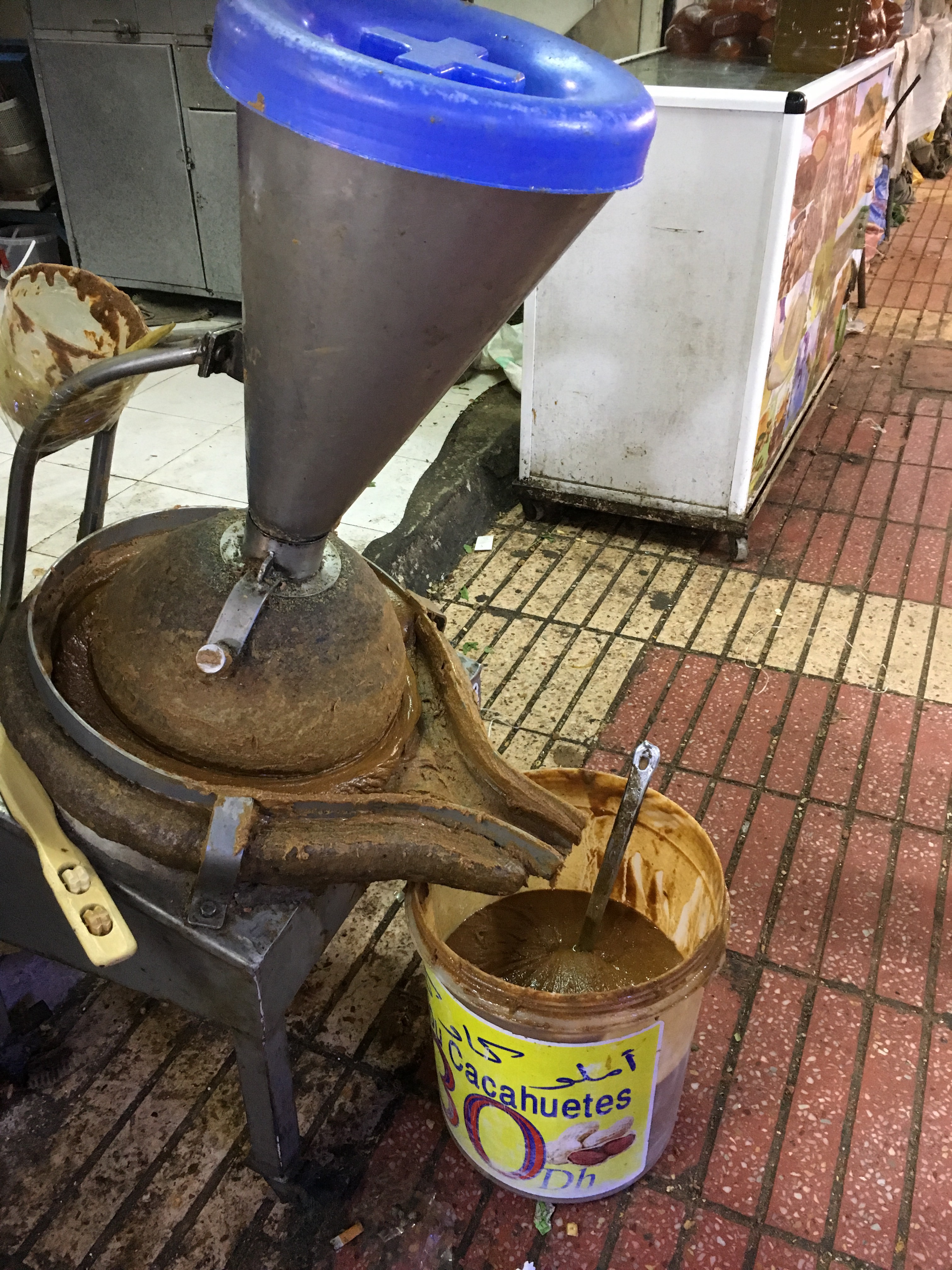
There’s an area of the main souk in Agadir that is devoted to lots of different types of candies and “cakes”
They are so neatly presented!
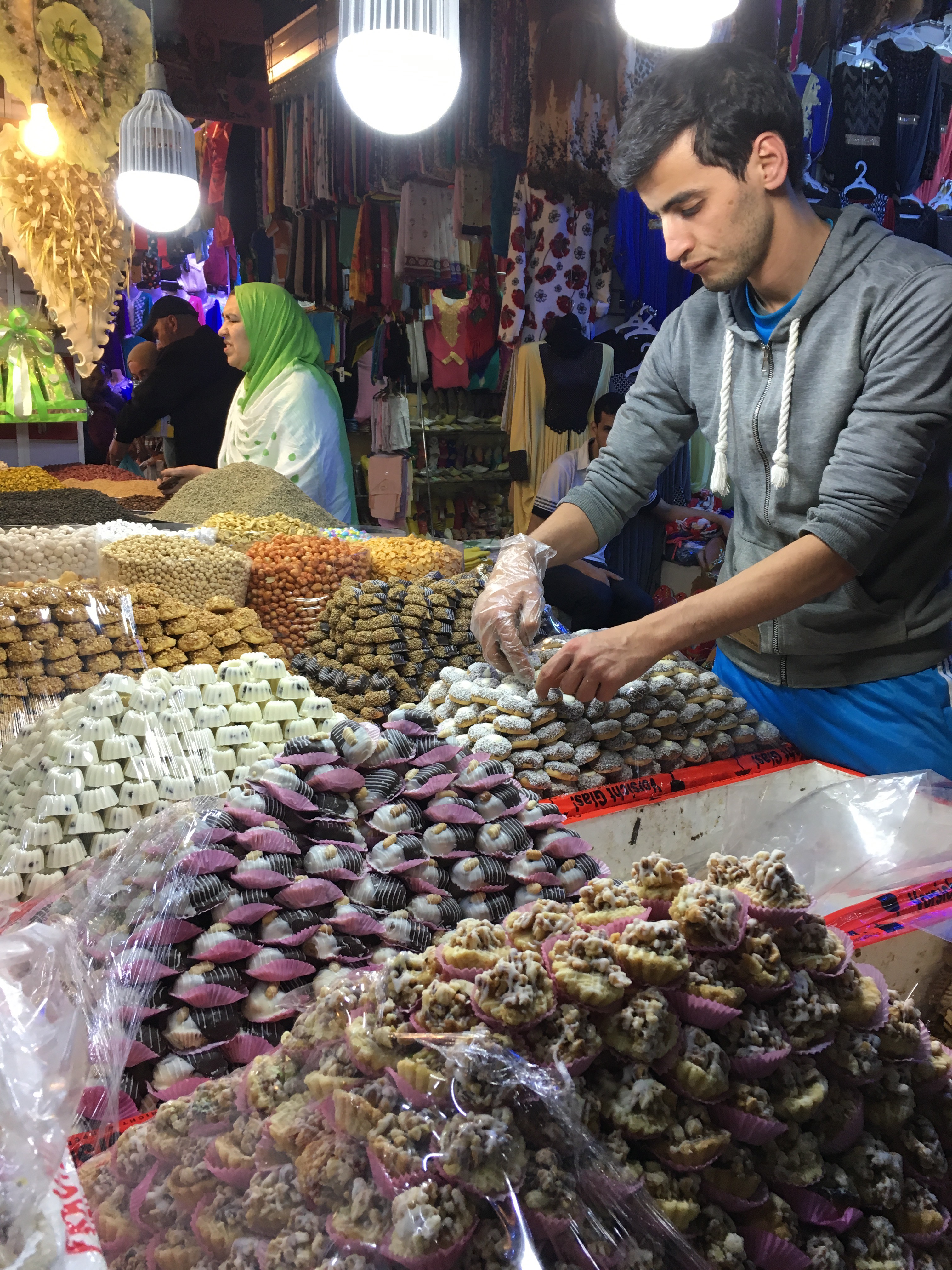
Less fun for students, but more fun for adults is the array of spices available!

My favorite experience with food so far was purchasing fruits and vegetables at th souk, which reminded me some of South Anchorage summer farmers market.
Plenty of oranges!! Fruits and vegetables are chosen and placed into these bowls and then given back to the seller to weigh.
Youssef, my host teacher choosing oranges. There are a few types, one that actually looks like a lemon even when you cut into it, but is actually an orange!
At the end of the day, the cost of the fruits and vegetables is even lower, but the market gets very busy because that’s when a lot of people shop.
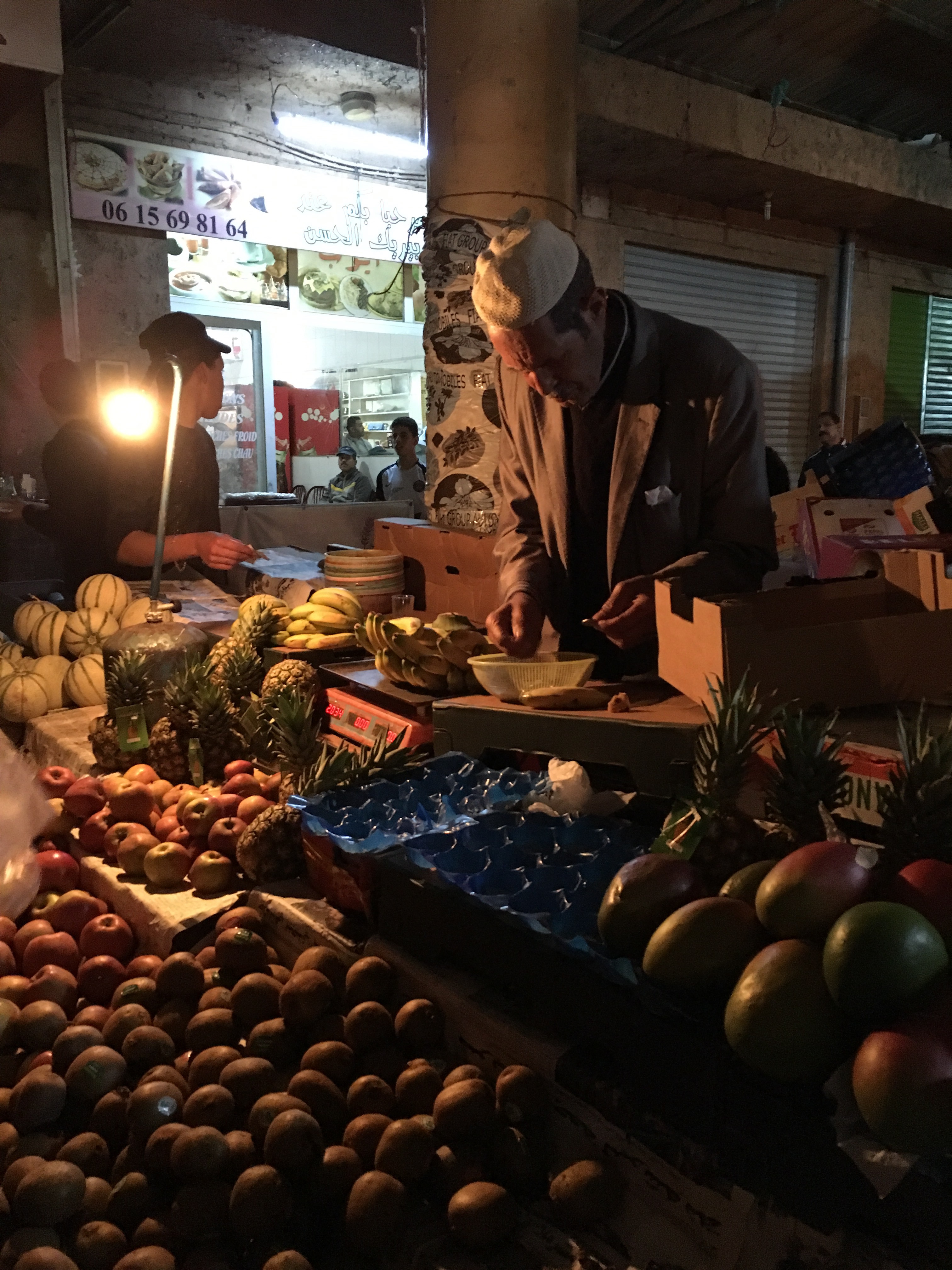
This is a traditional Moroccan meal with lentils, white beans, tagine, and grilled sardines. It is quite customary to eat with your dominant hand, and use three fingers. Moroccans are great about remembering to wash their hands before they eat. This food was so yummy, and having the little dishes to eat out of was quite fun.
The fish market. My new favorite fish is sole. Calamari (squid) is served at a lot of places.
Here, you choose your chicken that you want to have for dinner, which is quite different than it is for me at home. I had a bit of a hard time not getting a little emotional.
More seasoning for flavorful food.
Food in many parts of the world is quite symbolic for elements of life. In Morocco the food is well taken care of, slow cooked, and always enjoyed in the company of others. This follows the nature of the Moroccan people, in the care put towards everything they do, how well they take care of each other, and how important relationships are between people.
Ahhhhhhhh. YUM

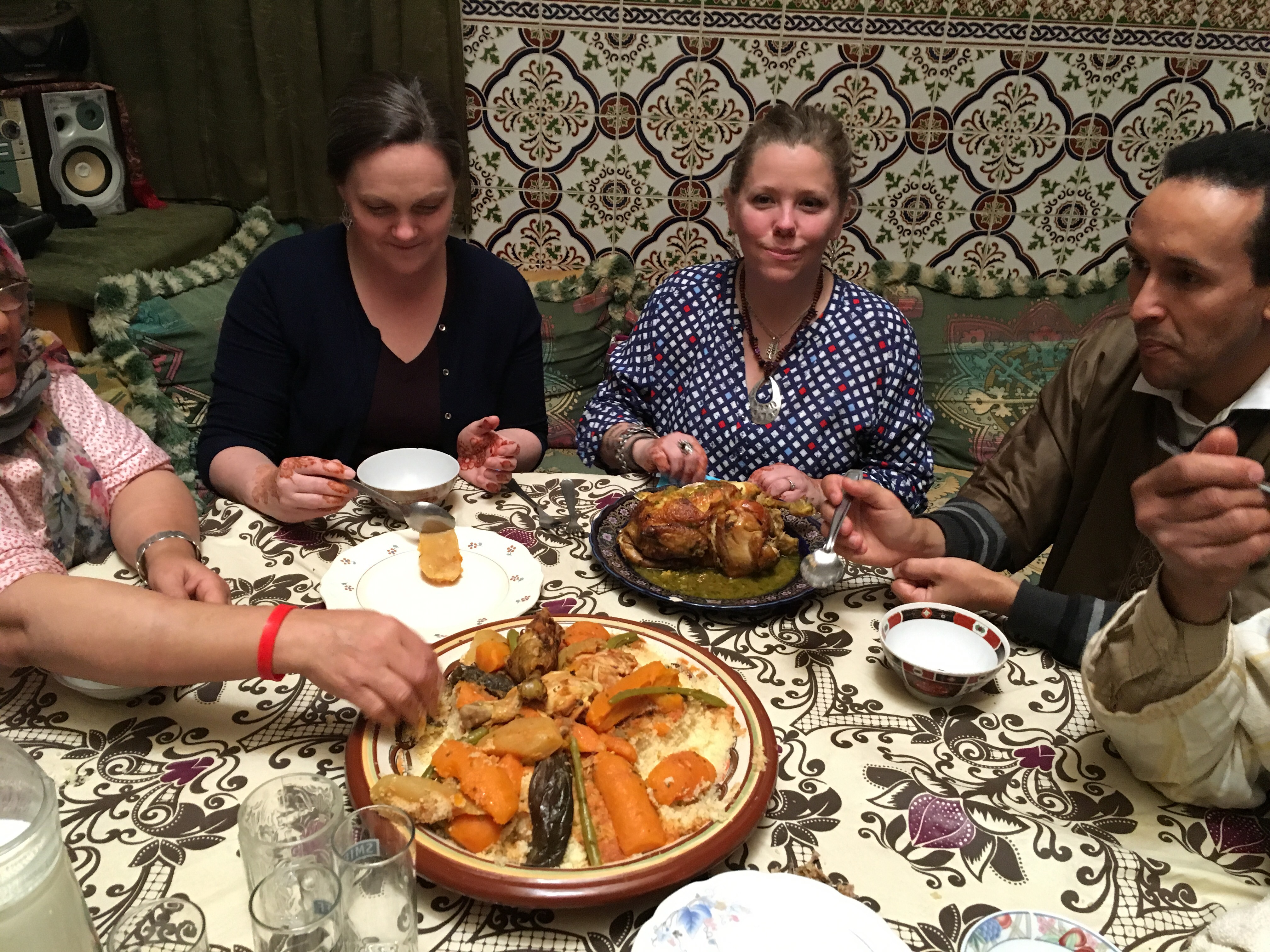
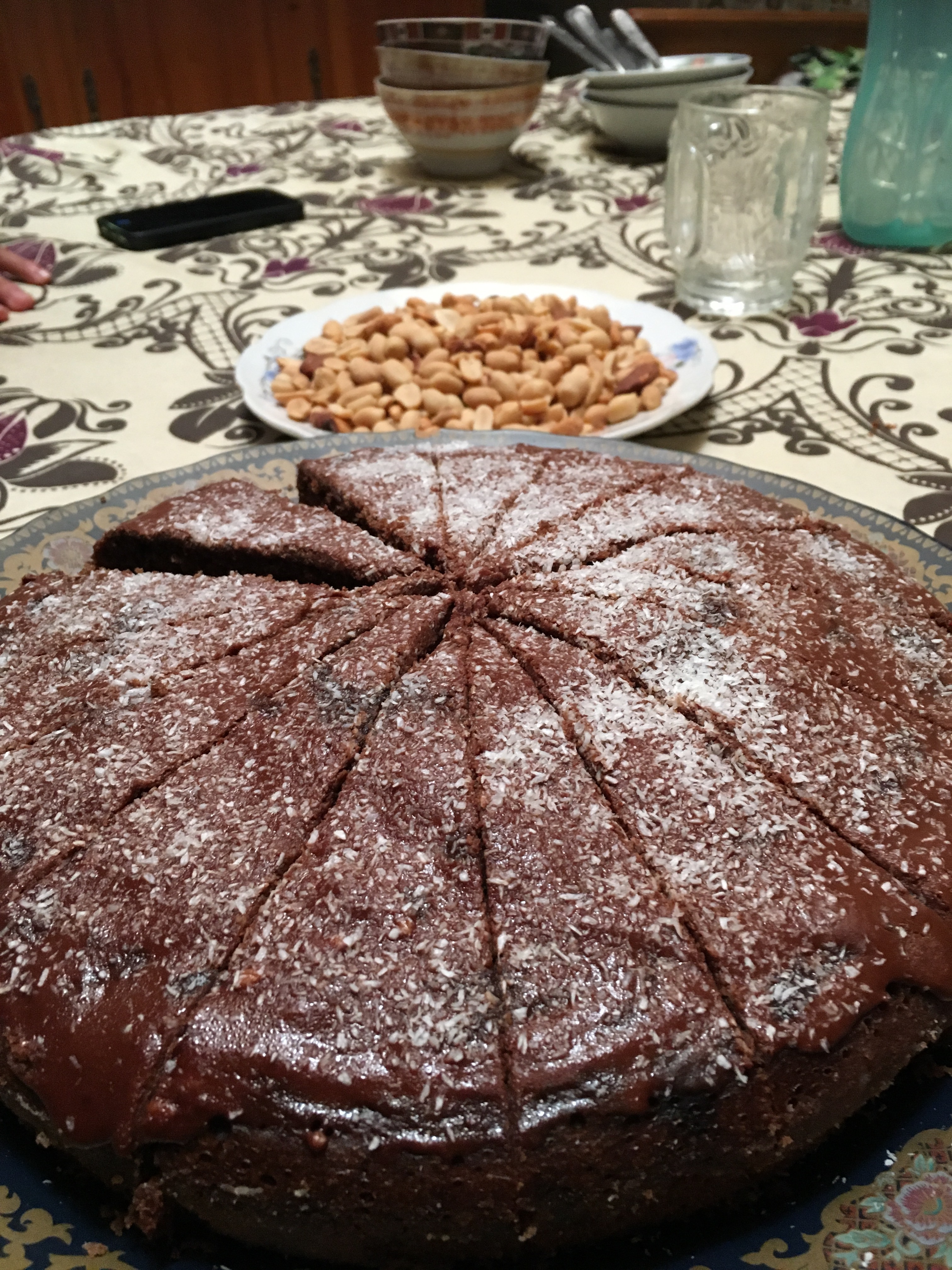

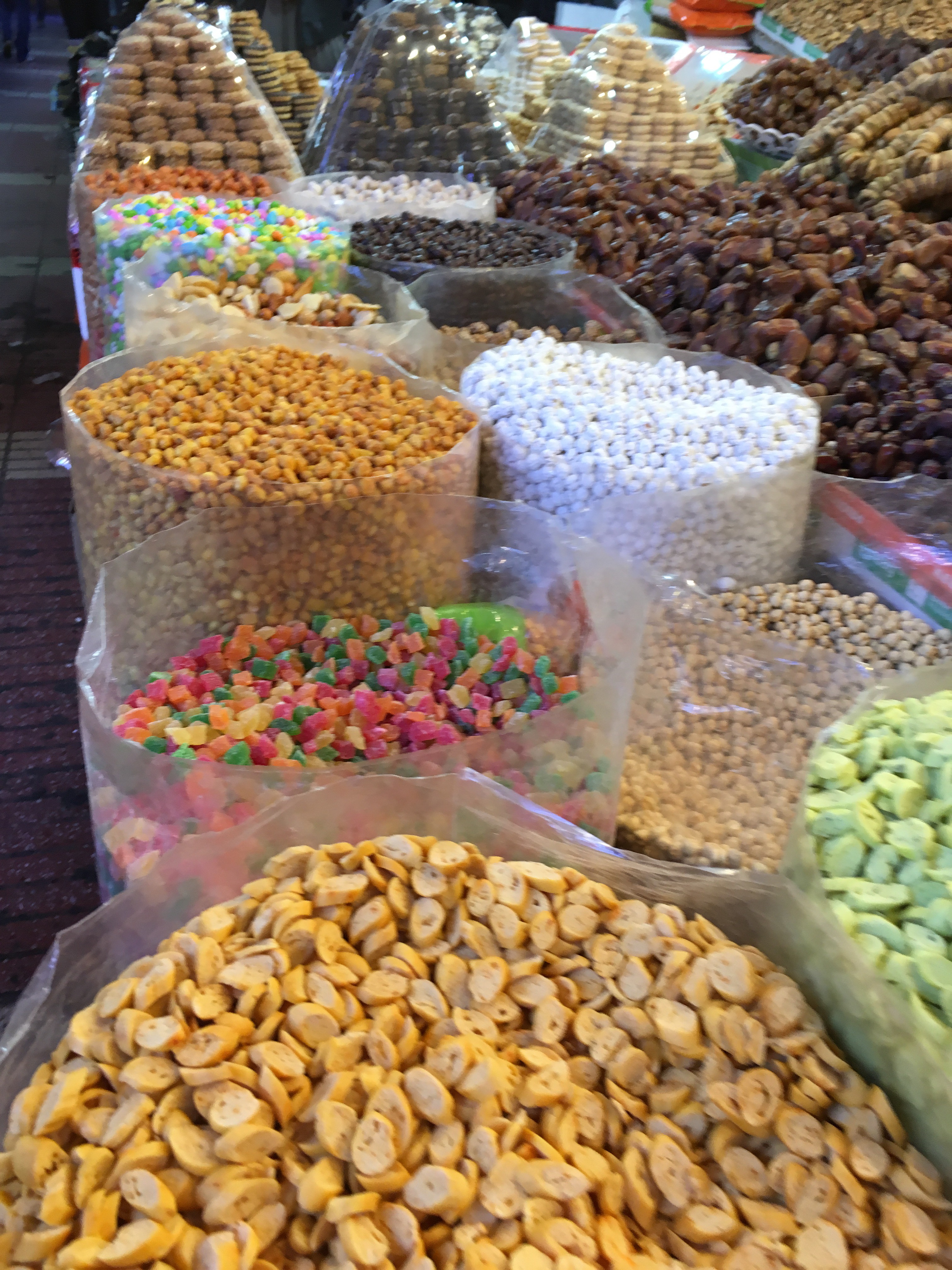
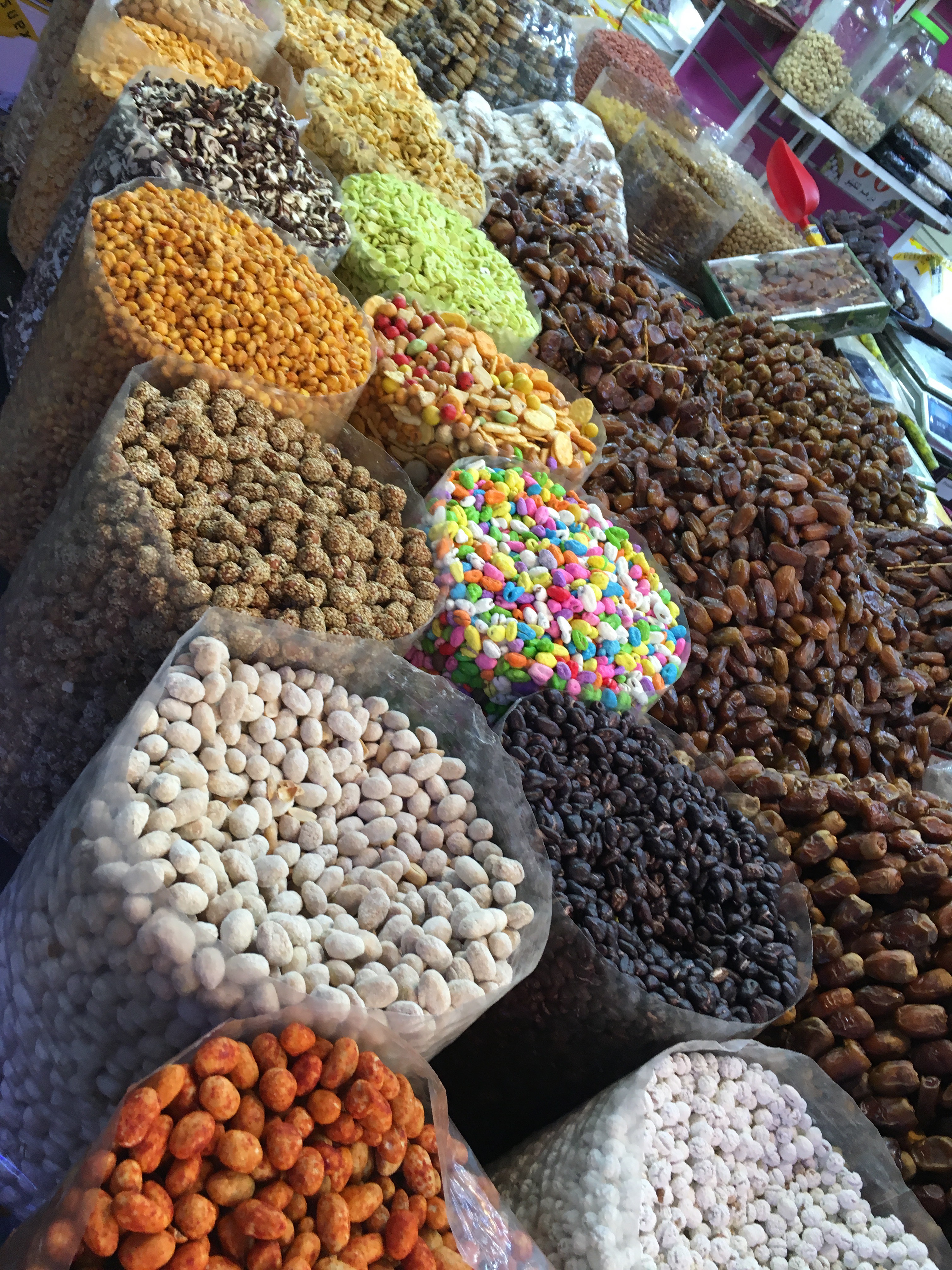
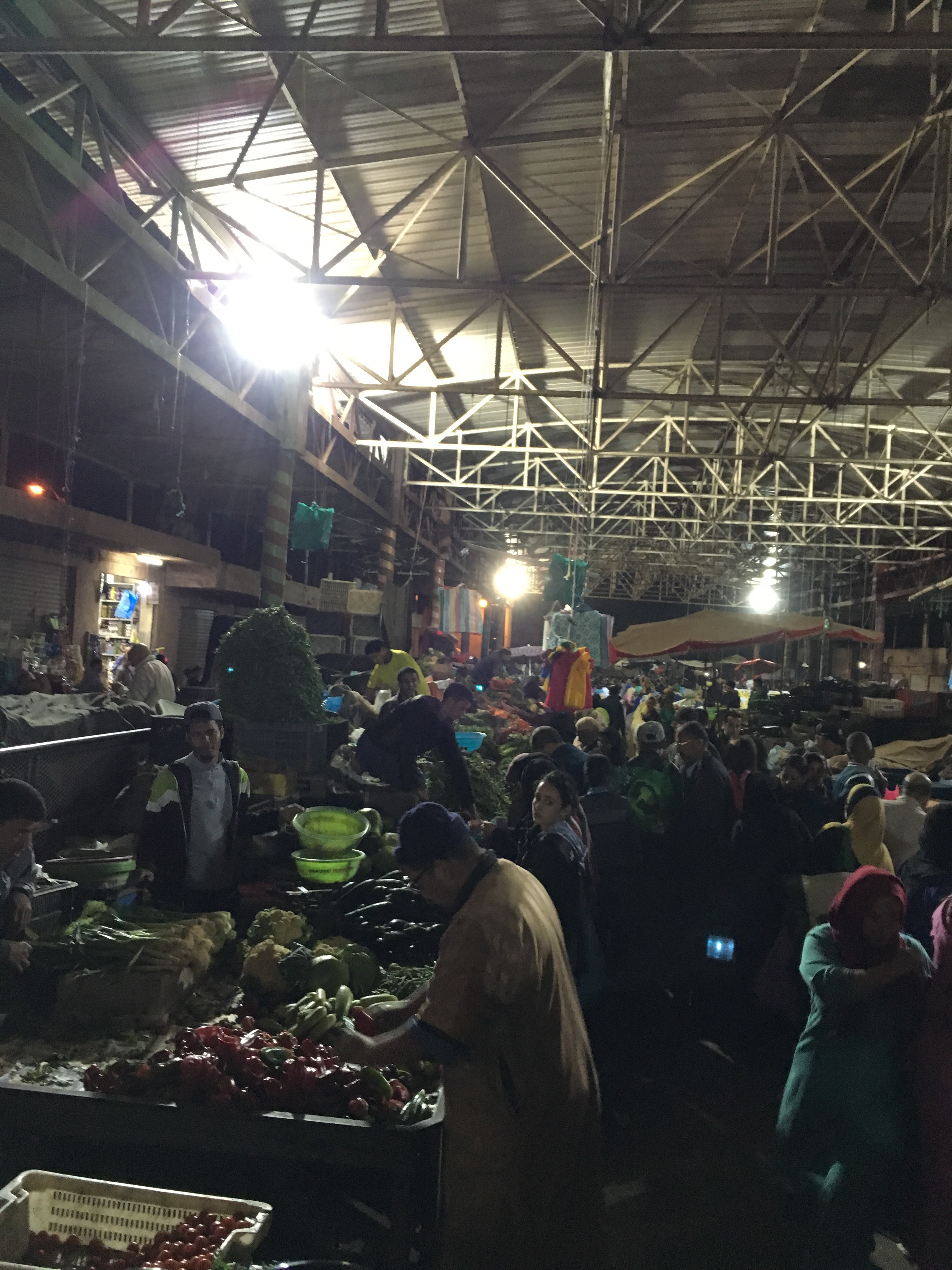
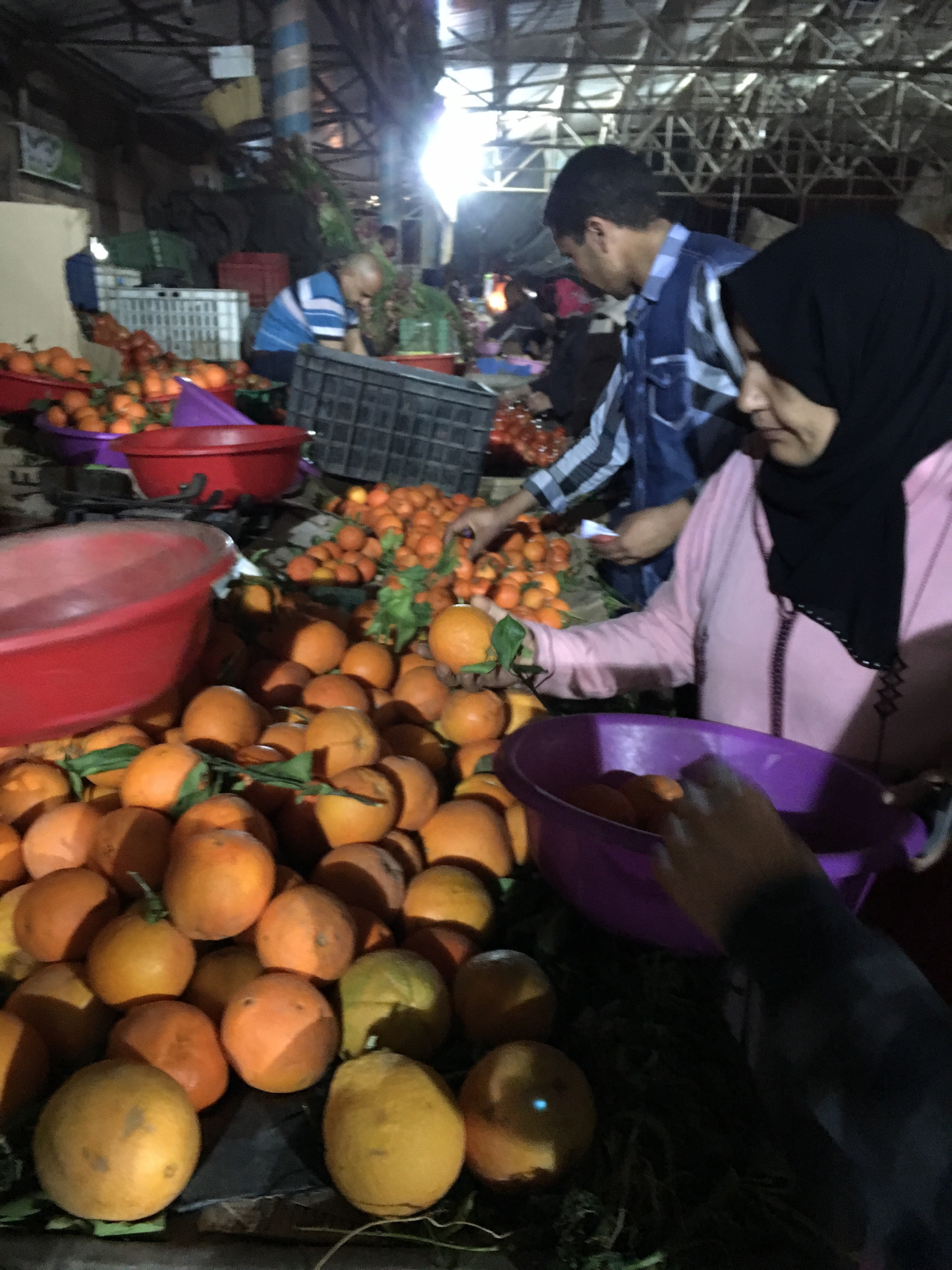
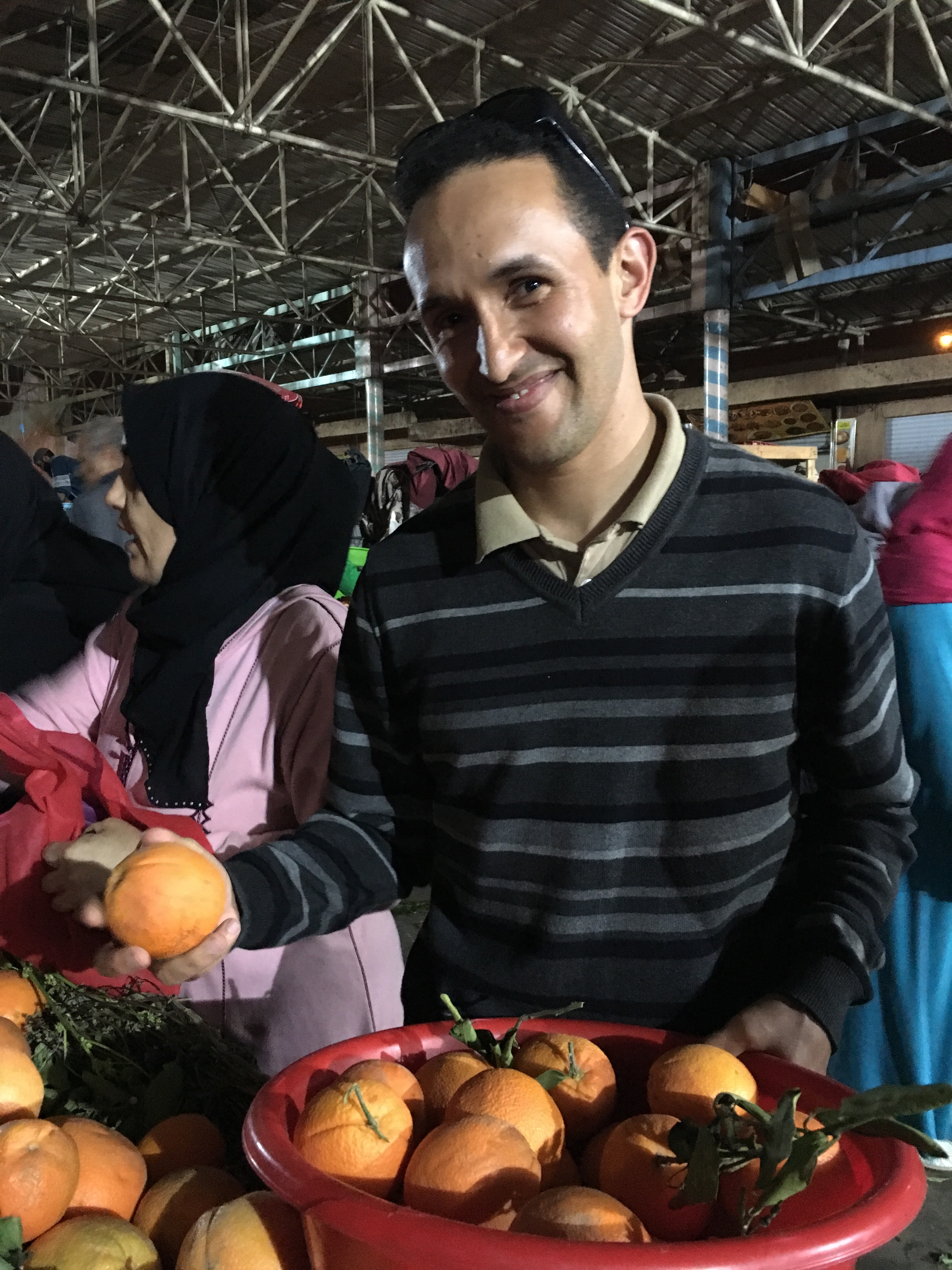
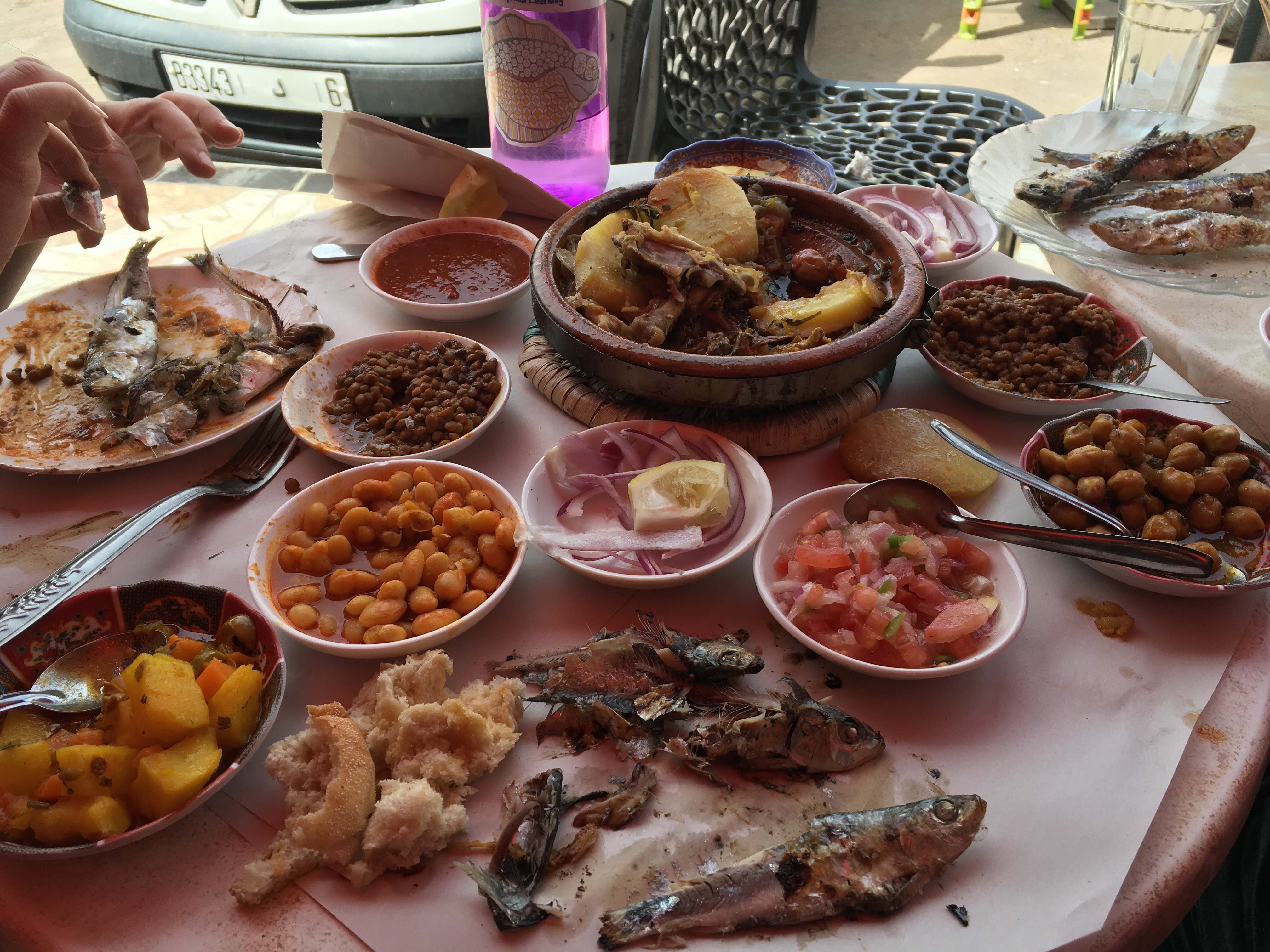
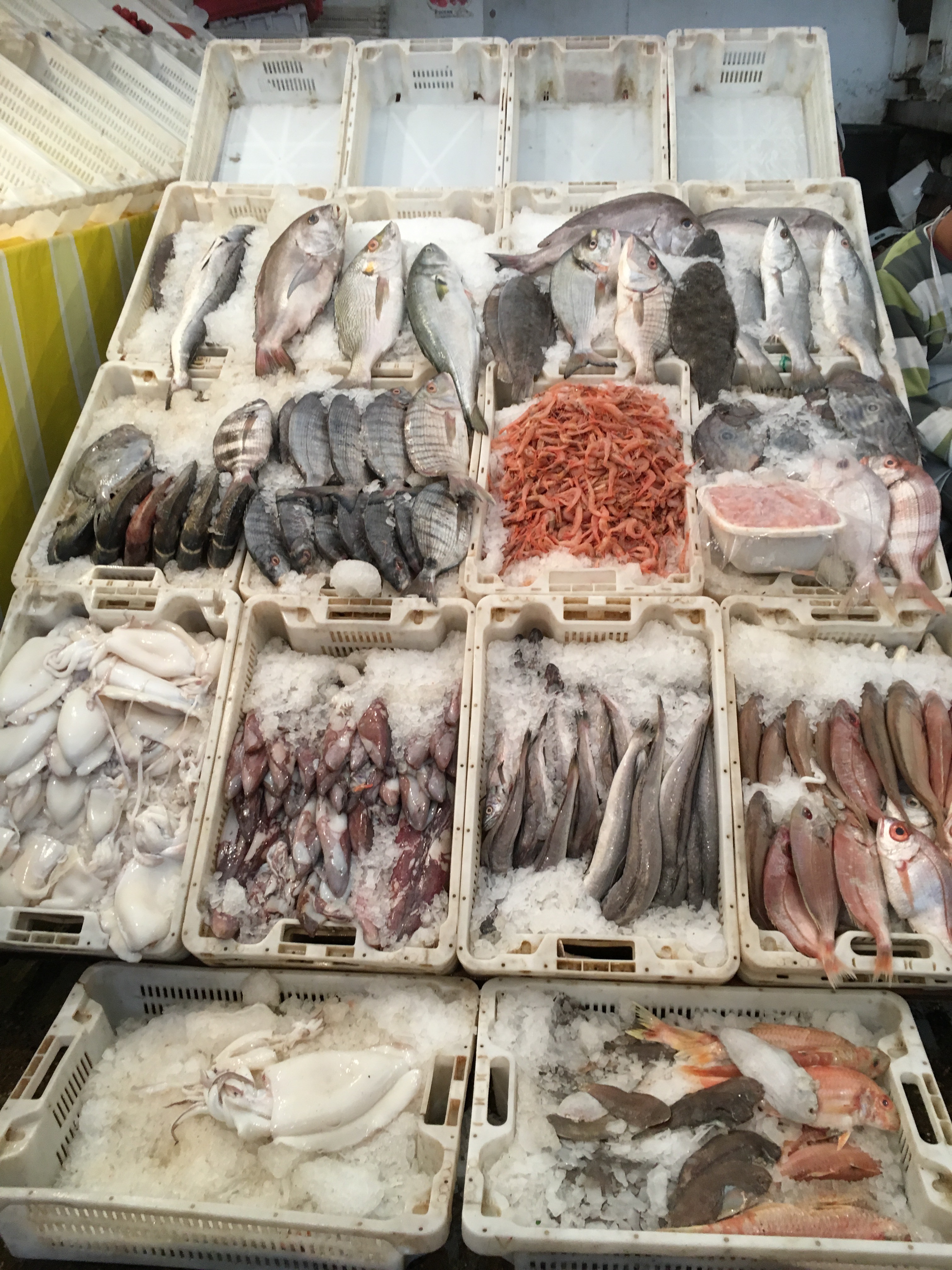

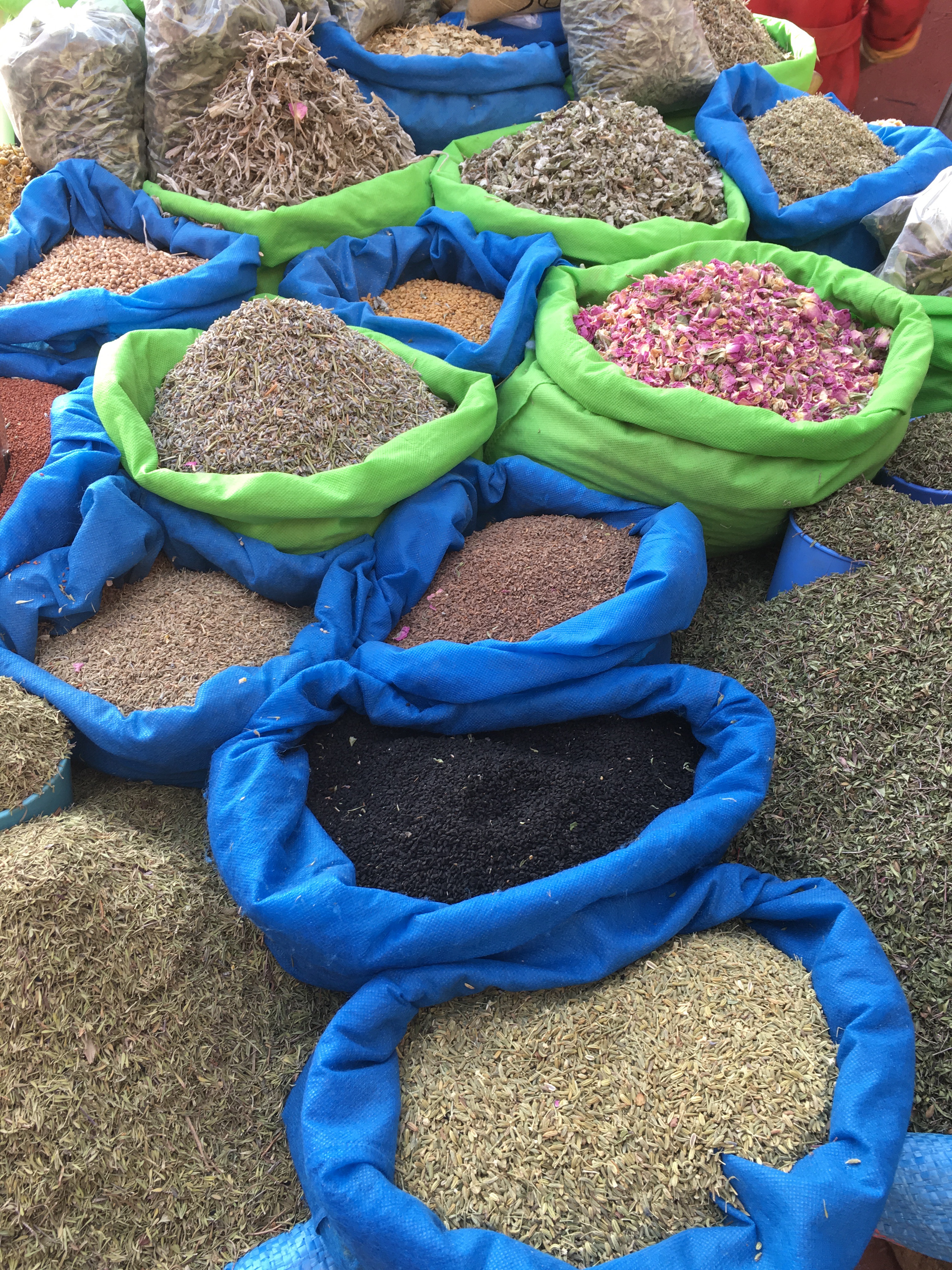
I love there Painting at their school it’s so realistic
I love all the art I see here! I will show more pictures
How are the dresses are made
Do they crystals on them.
Most of the dresses are either handmade or made here local with sewing machines. They are quite elaborate! There are lots of gems on the wedding dresses, yes. I took lots of pictures and will show you all when I return.
We’re so jelly of the candy there. We what to jump in to the picture and eat it all.The candy looks soooo good
Why is mint tea so famous? We have never tried mint tea.
Is the candy good or is it bad and are the kids fun.